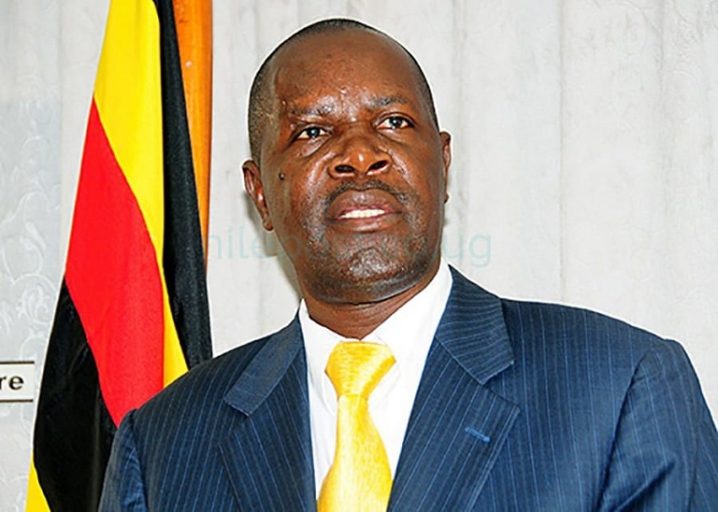This week while on a drive around Mbalala Industrial Area in Mukono district I chanced on an old friend now working for Grainpulse Limited whose shareholder l discovered is another friend, Hannington Karuhanga. Karuhanga is a very low-key man you easily pass in town.
Grainpulse manufactures a range of fertilizers on specific requests from farmers like palm oil growers in Kalangala and Buvuma districts, and Lugazi, Kakira, and Kinyara sugarcane growers. It also supplies barley, sorghum and maize growers in Mubende, Kisoro, Sebei, Bunyoro and Kigezi sub regions. In addition, Grainpulse has built a huge grain and flour processing facility currently with capacity of 2.4 million tons. This eye-opening investment compelled me to delve into what the Uganda Investment Authority (UIA) has been doing lately especially Industrial Parks around the country.
As the chief investment promotion agency of government established in 1991, UIA has undergone transformation and now operates under Investment Code 2019 with the responsibility of coordination, attraction, registration, facilitation and monitoring of Foreign Direct Investments (FDI) and Domestic Direct Investments (DDI) in Uganda. The Covid pandemic, which disrupted global industrial productions and supply chains, has highlighted the importance of countries like Uganda looking inward for industrial growth and development.
From Mukwano Industries, now a sprawling group of companies dealing in tea plantation, beverages, vegetable oils, soap, detergents and utensils, Uganda today boasts of thousands of industries. Mukwano Industries is an example of a critical domestic industrial investment.
At the Dubai Expo, Uganda has sent its delegation with 64 bankable investment projects targeting sectors like agro-industrialization, renewable energy, mineral development, tourism, manufacturing, infrastructure development, ICT and digital economy. Uganda is signing various deals, memoranda of understanding, and investment intents with potential investors from around the world. It’s participating in investment promotion activities and business-to-business meetings, and hopefully can also attract FDIs in high-tech areas.
In 2020/21, amidst the Covid pandemic, reports indicate that the number of investment projects licensed by UIA increased from 256 to 395 from the previous year. This remarkable increase was on account of significant rise in domestic direct investments (DDIs), to 159 from 89 projects the previous year.
In terms of investment size, 2020/21 registered a 125-percent increase in value of planned investments to USD 1.864 billion, up from the USD 0.83 billion registered in 2019/20, and investment value doubled. The planned employment for the year stood at 43,442 direct jobs, compared to 28,000 planned jobs the previous year, a percentage growth of 68.6%.
While DDIs are increasing, FDI is still higher, although the gap is narrowing. In 2020/21, domestic investors contributed the biggest number of licensed projects, 158, accounting for 40 percent, followed by China with 18%.
FDI-sourced planned investments totaled USD 1.066 billion and accounted for 57.2 percent of all the planned investments. In terms of the sources of investments, Uganda topped with 158 licensed projects, followed by China (71 projects) and India (69 projects).
The manufacturing sector attracted the biggest number of licensed projects at 242, accounting for 61 percent of all the licensed investment projects, followed by agriculture, forestry and fishing sector with 11.6 percent, with construction sector coming third with 4.8 percent.
In Namanve alone, 16 new big industries became functional, bringing the total of operational industries in the flagship industrial park to 78, from 62 in 2019.
Consistently, Ugandan investors have shown strong confidence in the economy and continue to invest at home. It is what government, led particularly by President Yoweri Museveni is encouraging, and all leaders ought to actively promote both FDIs and DDIs.
The Covid pandemic has solidified the importance of a strong DDI base as cushion for global economic headwinds, disruptions in the global supply chain notwithstanding.
Over the years, Uganda’s top source countries for investments have been Uganda and Kenya and the Investment Code refers to Ugandans and East Africans as domestic investors. Leaders in FDI are China, India, Egypt, United Kingdom, Canada, Mauritius, Pakistan, Turkey, US and the Netherlands.
The manufacturing sector’s contribution of merely 8 percent in 1990s now stands at 27% surpassing EAC target of 25%. Uganda is increasing its share of locally manufactured goods on the shelves of domestic supermarkets, shops deep in rural areas and on the streets. In terms of import substitution, the balance of trade between Uganda and Kenya, one of our biggest trading partners is tilting. Kenyan goods used to dominate Ugandan market, to the extent that Uganda was derisively dubbed “Kenya’s biggest supermarket” has changed as Uganda now exports more to Kenya, and the balance of trade favours the former.
The benefits of FDIs are more than producing hitherto imported goods, reducing imports, import bills and boosting exports. One key benefit is the transfer of much need capital, technology, skills, management style and entrepreneurship and ethos. Many workers will transform into entrepreneurs, investors and innovators, or creative innovators from within industries currently employing them. Kampala Industrial Park (Namanve) has dozens of Uganda’s Top 100 taxpayers in addition to PAYE and other indirect taxes and industrial employees boost aggregate demand, critical for economic activity, growth, development and ultimately socio-transformation.
Do you have a story in your community or an opinion to share with us: Email us at editorial@watchdoguganda.com












